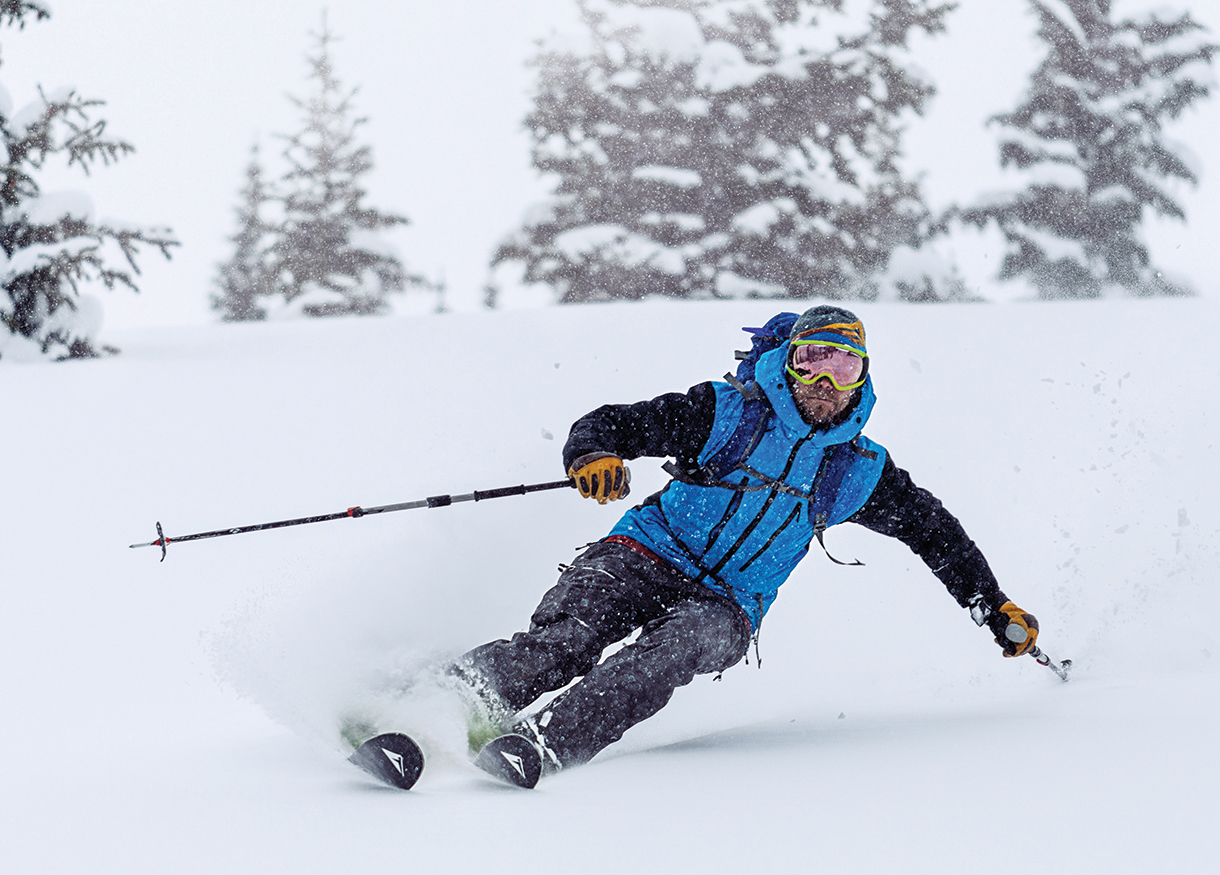
Sports
The American Alps
A new ski tour route in Colorado’s San Juan Mountains.
Photographed and written by Chris Brinlee Jr.
Snowflakes the size of quarters waft from gray skies above, coating waxed canvas parkas in splotchy white designs. Through the storm, skiers glimpse layer upon layer of Colorado ridgelines stacked with bristlecone pines, blue spruce, and Douglas fir, and after 24 hours of snowfall, a deep blanket of fresh powder covers the slopes. A light is on inside the permanent, freestanding Thelma Hut, staffed by a caretaker and professional chef. In nearby valleys, Thelma’s sister cabins, just as striking in architectural design, shelter skiers from the weather, forming the American Haute Route—a new adventure more akin to a European ski tour than anything done before in the United States.
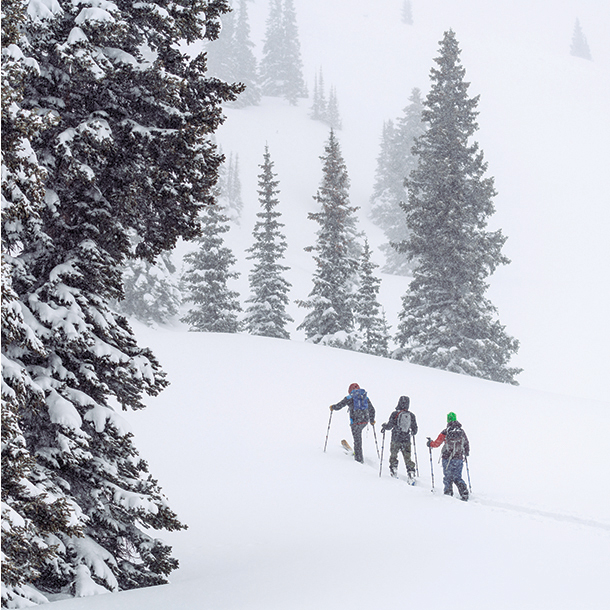
On the American Haute Route trail

The name comes from the world’s most iconic, coveted, multiday ski tour. Covering a distance of 112 miles between the alpine meccas of Chamonix, France, and Zermatt, Switzerland, the Haute Route literally translates to “High Way,” which is an apt, straightforward description of the contour line it follows across the map. The comprehensive network of catered huts provides hot meals and warm beds for ski tourers, who typically complete the trip over the course of a week. Huts throughout the European Alps (more akin to alpine hotels than spartan shelters) number in the hundreds. There’s Italy’s Ortler and Austria’s Silvretta, both of which are often referred to as “Haute Routes” and renowned for their own geographically unique culture and terrain.
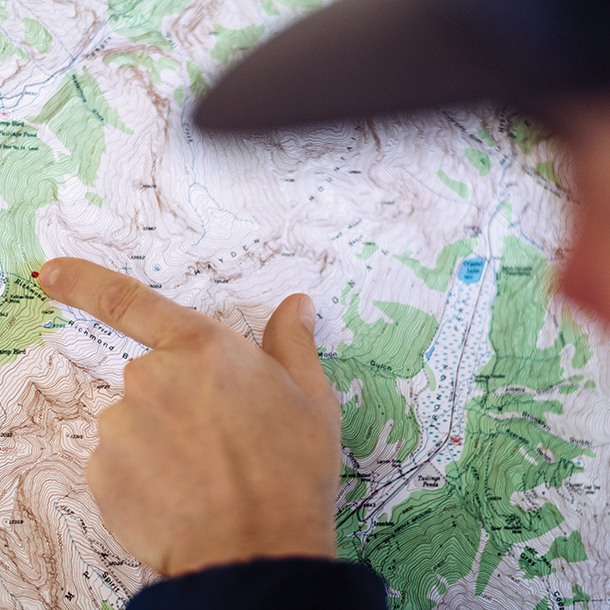
Figuring out the best terrain for the day
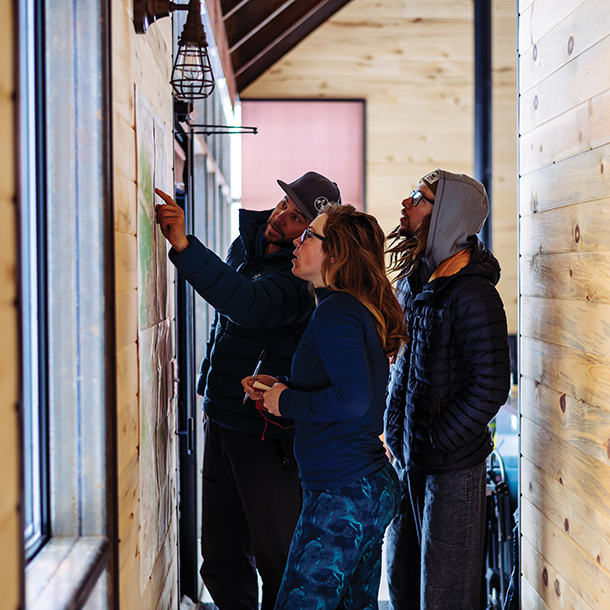
The American Haute Route, conceived by Ouray, Colorado–based Peak Guides (peakguides.com), is no different. The first-of-its-kind tour in North America links three new strategically placed, privately owned, and fully catered European-style huts—the Thelma, OPUS, and Red Mountain Alpine Lodge—for a four-day tour of three southwestern Colorado meccas. The Telluride, Ouray, and Silverton ski areas facilitate lift- and backcountry-access to some of the best ski-touring terrain in one of the most rugged and beautiful mountain ranges in the United States. “The San Juans are unique, especially for Colorado,” says Lance Sullins, owner of Peak Guides. “Geographically speaking, they are big mountains with significant distances between them that are difficult to cover. They’re not linear, and to make matters more interesting, you’ve got all of these old mining roads making the mountains more accessible than in other places in Colorado; and there are far more catered huts here than anywhere else in North America.”
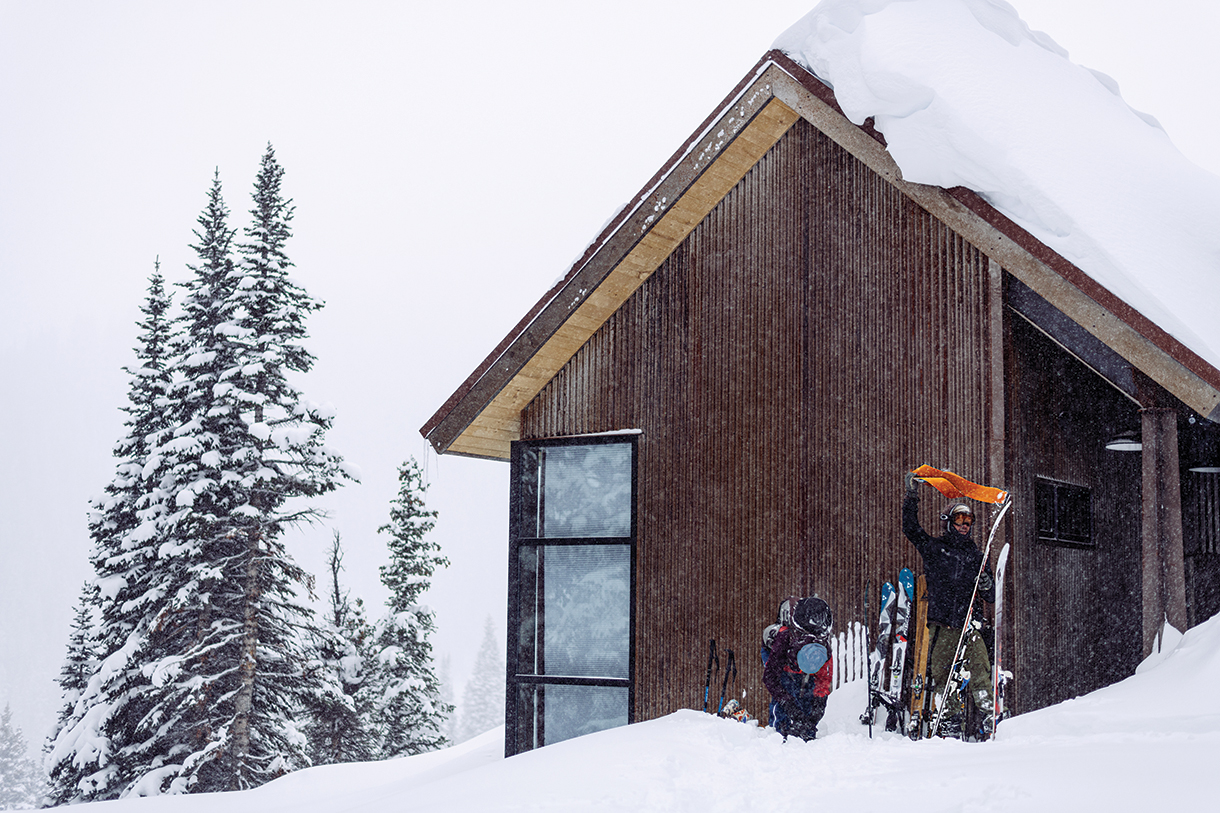
Located on a geological bench a half-mile off US Highway 550, Thelma Hut sits midway between Ouray and Telluride with accommodations for eight in an open-concept space that is equal parts modern and rustic. The metal door, carved with contour lines pulled from a map of the hut’s location, opens to the boot room, and beyond that is a vaulted atrium showcasing panoramic mountain views and the 14,158-foot Mount Sneffels in the distance. Against the far wall, a fire rages inside the wood stove surrounded by plush seating. Dinner is served family-style around the wooden dining table constructed from a single crosscut of a gargantuan cottonwood. Before bed, guests often brave the short, snowy trek to relax in the sauna.

The next day, depending on conditions, guides lead skiers up over the pass to another valley, or tour them around Thelma Hut, seeking deep, untracked powder in the low-angled, gladed terrain. “The American Haute Route embodies an idea more than it achieves a specific point-A-to-point-B-type course,” says Sullins. “You should expect to be flexible on this trip. There’s always great terrain; there’s always great skiing. If we go in with the goal of working through the best terrain available, given the variable conditions that the region experiences, we’ll all have a great time.”
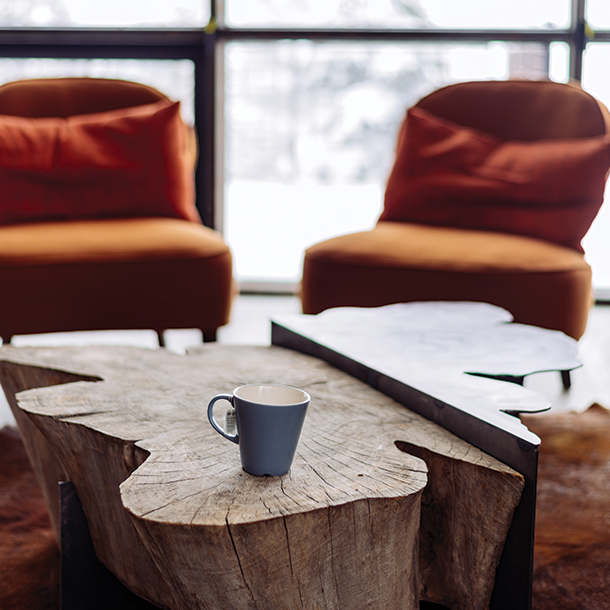
European-style accommodations
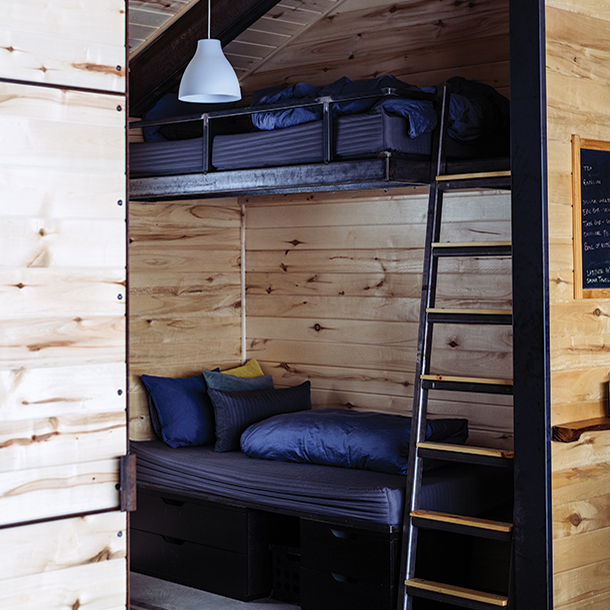
The time of year often dictates the specifics of a tour. Trips later in the season, like in April, experience a more stable snowpack, which allows skiers to traverse up high. Trips earlier in the winter, in January or February, will likely be characterized by massive amounts of snowfall. Nearby Telluride mountain receives more than 300 inches annually; a backcountry ski tour around Red Mountain Pass, where Thelma Hut is located, can almost guarantee access to as many untracked powder runs as skiers can handle. The catch is that skiers must work for them. Unlike alpine skiing, done with the aid of mechanical lifts, backcountry skiing relies on muscle and special ski touring equipment: skis equipped with touring bindings; boots that can pivot at the ankle for climbing then lock into place for descent; climbing skins to grip snow while moving uphill without sliding back down; adjustable poles; and avalanche safety gear. With great powder comes great responsibility, and unfettered snowpack can develop instabilities in slopes. Thus, skiers follow AIARE expert guides trained to read the snowpack, perform in-field stability tests, and decipher information delivered by local avalanche forecasters. The trade of lift line chatter for the sound of tree branches cracking beneath the weight of snow and bald eagles combing the skies begs no comparison—even though a good day means skiing just three or four runs. The transition from climbing mode to screaming downhill requires stripping skins and locking boots and bindings. Then skiing a perfect line with deep, billowy turns and no one outside of your party around for miles.




